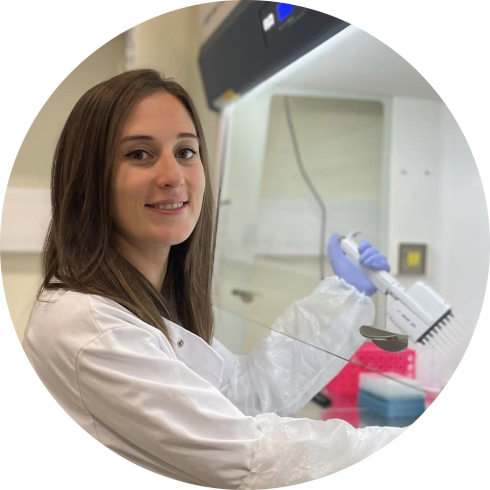Understanding protein clumps within MND, including the impact of their dysfunction and their mechanisms.
Principal Investigator: Dr Robin Highley
PhD Student: Sarah Granger
Lead Institution: University of Sheffield
MND Association Funding: £116,499*
Funding dates: October 2022 - March 2026
*Supported by the MND Association Northern Ireland Branch
About the project
Two types of abnormal protein clumps have been identified in MND. While TDP-43 clumps have been studied extensively, protein clumps known as Bunina bodies are less understood. These clumps are composed of a protein known as cystatin C (hCC) which plays a key role in autophagy (a mechanism used to remove faulty proteins). hCC dysfunction is likely to cause autophagy failure and thus TDP-43 clumps and cell dysfunction. This project aims to better understand the extent of hCC/Bunina body pathology in our brains and how hCC dysfunction impacts TDP-43 clump formation and autophagy. If these neural mechanisms can be understood, researchers will gain a better understanding on how to stop or slow the disease process.
What could this mean for MND research?
Gaining a better understanding into the mechanisms of MND, such as the behaviour of protein clumps, will help researchers understand more about the disease and look into potential ways to stop or slow the disease. This understanding can also lead to identifying potential targets for new therapeutic drugs.
Resources
Project code: 907-792
